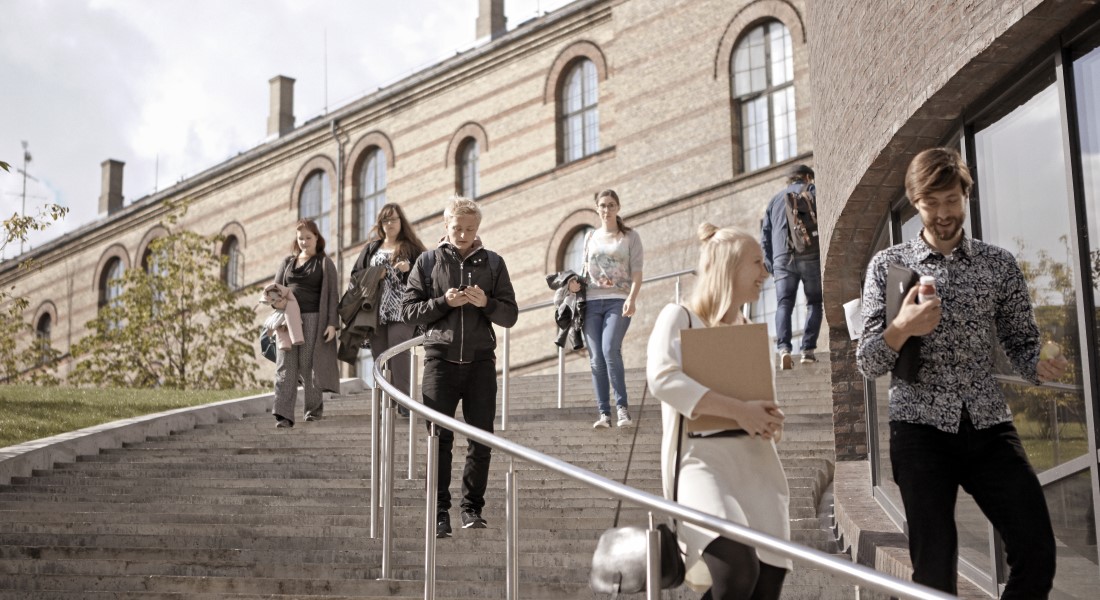
Educational mobility on the decline in Denmark
In 20 years, the impact of parental background on children’s education has increased significantly, and today Denmark is on par with the US despite free education and state education grants. Children born to parents with high education have been more effective in taking advantage of rising college and university completion rates.

Closing the small village schools and increasing compulsory schooling from seven to nine years in the mid-20th century resulted in an increase in education never seen before in Denmark.
Whereas just around 60 per cent of the children born in 1940 had nine years of schooling, this was true of almost the entire 1960s cohort. In just a few years, the impact of parents’ social background on their children’s level of education decreased, and Denmark became one of the most equal countries in the world with regard to educational mobility. The country even overtook the ‘land of opportunity’, the US.
Now research from the Department of Sociology at the University of Copenhagen and the ROCKWOOL Foundation Research Unit shows that the positive development in the influence of parental background on children’s education has not only stalled in the past 20 years; it is now moving in the wrong direction.
If we calculate the influence of parental background on children’s education by looking at how much of the inequality characterising the parents’ generation that has been ‘passed onto’ the next generation, we get an increase from 0.3 to just under 0.5 (see figure 1). In other words, whereas around 30 per cent of the inequality in education was passed onto children born in the mid-1960s, the figure is closer to 50 per cent for children born in the late 1980s – a substantial increase.
In fact, the level of educational inequality that is passed on from parents to children and youth today is just as ‘strong’ as it was 40-50 years ago, when parents’ background still had a greater impact on children born in the 1940s.
Figure 1: The influence of parental background on children’s education in Denmark and the US
(Children’s years of schooling regressed on parents’ years of schooling)
The negative development once again places Denmark on par with the US, which is considered a far more unequal society than Denmark on various parameters.
“We are familiar with the story about Denmark and the development in welfare in the 1950s and 1960s, which made us one of the most socially mobile countries in the world – as well as one of the richest and most equal. But our study shows that this is in the past. Family background is once again becoming a strong influence,” explains Associate Professor Kristian Karlson from the Department of Sociology.
He and Rasmus Landersø, who is Research Leader at the ROCKWOOL Foundation, have conducted the new study.
Longer education – but not for everyone
The two researchers have studied cohorts born in 1911–1987 by comparing information about children’s and parents’ education from questionnaire surveys and register data.
Here data indicates that the average level of education has increased over the past 40 years: from around 11.5 years among children born in the mid-1950s to just under 14 years on average among those born in the late 1980s. In the same period, the percentage who gets a further education has increased from just under 15 per cent to 40 per cent.
Offhand, then, this looks like a society that has successfully managed to adapt to the new knowledge society. But alongside the increase, Denmark has seen highly increased polarisation, as not everyone has managed to jump onto the educational bandwagon.
Whereas the increase in level of education in the mid-20th century involved raising the ‘bottom’, today children of the most well-educated and socioeconomically advantaged parents are the best at utilising the greatly improved access to higher education, and they thus outrun the others.
This development has taken place in a period that has seen the introduction of state education grants and improved childcare, alongside free access to education. Welfare programmes which, although meant to benefit the most socioeconomically disadvantaged, do not always do so.
According to Kristian Karlson this says something about how hard it is to break the transmission of education and human capital between generations.
“If there is one thing that is politically difficult to redistribute, then it is ‘human capital’ – that is, our general ability as humans to develop and make the best of our abilities. In fact, there is much indication that Denmark is almost as bad at this as the US. It is much easier to redistribute money. As a society, we can use income distribution as a tool to reduce the financial consequences of educational inequalities, and this we do a lot better than e.g. the US.”
Far-reaching social consequences
There may be several reasons why children from socioeconomically advantaged families are better at utilising their potential in the educational system.
Among other things, research suggests that it is far more natural for children to get a further education if their parents did the same. At the same time, their parents can offer concrete advice in the process. Advantages such as these were less important when compulsory schooling was increased from seven to nine years. At the time, it was merely a matter of “more of the same type of education”, according to Kristian Karlson.
But regardless of the underlying explanations, the development is worrying, as level of education is one of the strongest indicators of how well a person does later in life.
Seeing as children’s education is increasingly linked to their parents’ background, educational inequalities also affect a number of other social aspects such as employment, income and juvenile delinquency (see figure 2).
Figure 2: Connection between education and other elements in life
(Correlation with years of schooling)
As evident from the figure, the correlation between children’s level of education and other elements in life increases alongside the influence of their parents’ level of education.
In other words, this results in increased polarisation in society with potentially far-reaching consequences. However, it does not mean that the welfare state has failed in terms of education.
“We managed to reduce the impact of parental background by half in the mid-20th century. This was a great achievement. But the changes introduced then cannot be made today,” says Kristian Karlson, who therefore hopes the study will restart a debate on how best to ensure high educational mobility.
“Somewhat cynically one could perhaps say that the idea of equal access to education for all is all very well. It just does not exist today.”
Topics
Related News
Contact
Associate Professor
Kristian Bernt Karlson
Department of Sociology
Email: kbk@soc.ku.dk
Telephone: +45 35 32 15 88
Research Leader
Rasmus Landersø
The ROCKWOOL Foundation
email: rl@rff.dk
Telephone: +45 20 70 44 29
About the study
The study, ‘The Making and Unmaking of Opportunity: Educational Mobility in 20th-Century Denmark’, is conducted by Associate Professor Kristian Karlson from the Department of Sociology and Rasmus Landersø, Director of Research at the ROCKWOOL Foundation Research Unit. The study is funded by the ROCKWOOL Foundation.
The study analyses cohorts born in the years 1911-1987 by comparing information about children’s and parents’ education from register data and questionnaire surveys. The study builds on historical Danish questionnaire surveys as well as data from Statistics Denmark and General Social Surveys in the US.
Read the entire study (pdf).
The ROCKWOOL Foundation’s own presentation (in Danish).


